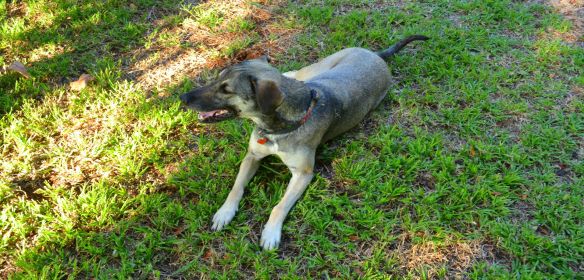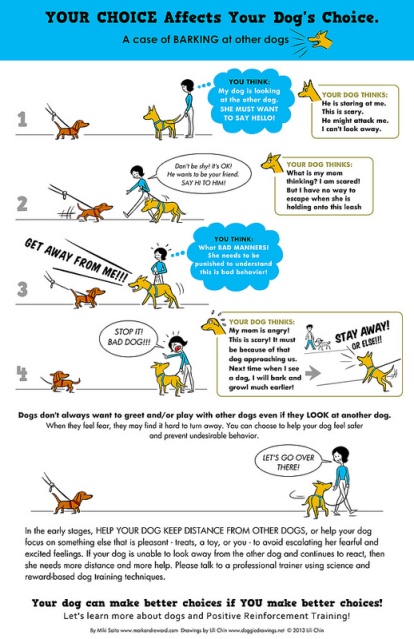Ah. My beloved Phoebe. You may remember the post where I explained how Phoebe became a part of the family. She is still such a joy, but I’ll be honest, sometimes it still feels so hard. Don’t get me wrong, there is no part of me that doubts my decision, or regrets a second of keeping her, it’s just that I’ve had to come to terms with the fact that she isn’t perfect, and neither am I.
My family have always been animal lovers – with K9 and feline family members that far outnumber their human familial counterparts. And we’ve mostly adopted from shelters where possible. So I was familiar with the fact that you never really know what you’re going to get, or what effects genes and environment will have on the dogs that they are. In hind sight I now see that we happened to strike the shelter jackpot everytime! I’ve never seen any problems that weren’t simple to overcome with a little TLC and perhaps a short obedience course – until Phoebe.
Wow. Phoebe is the poster doggy for rescue dogs that struggle to shake their past and their fears. But at least I know she isn’t alone in this, and that it’s unfortunately a very common problem with rescue dogs. As I mentioned in my last post, I believe the organisation I adopted her from failed us both in that they never bothered to learn about Phoebe’s personality traits, or did sufficient investigation before or after the adoption, even when I told them I had no idea what I was dealing with and needed help. But there’s no use dwelling on that, Phoebe and I were both up for the challenge!
You see Phoebe is what is referred to as a “reactive dog”. This means that for reasons that include insecurity, inability to socialise positively, fear, or general unease she lunges and snaps at other dogs. Not with full blown aggression and the intention to harm them, but a short, sharp warning through the medium of sharp teeth and a powerful jaw snap that would impress a crocodile!
Before Phoebe, I too was one of those people who silently judged other dog owners whose dogs lunged or barked at passing people or animals. I would stand there shaking my head and smugly congratulate myself on being a much better “parent” than the owners who I thought weren’t interested in putting in effort the of training and socialising properly. Really, I’d think, the only reason your dog is acting out is because you just haven’t tried.
Yup, karma is a bitch – apparently a highly strung reactive one at that!
I knew Phoebe had problems, but I guess I just thought that once we overcame the separation anxiety and she settled in she would become more secure, and the other “problems” like her reactivity would magically disappear like a stray piece of bacon dropped on the floor at breakfast time. We had pushed through the worst of it, established routines and adjusted to socialising slowly and at her own pace. I really thought that it would all be fine. I know that was naïve, but a girl can dream, can’t she?
I eventually had to admit that things weren’t getting better, and that I officially had a dog with ‘special needs’. This is a lot more difficult to admit than you’d think. I once again hit the internet in earnest to research how to handle this and soon realised that the feelings of inadequacy at your ‘failed parenting’ are totally normal and that the only thing to do is to suck it up and find constructive ways around it.
In my search I found this excellent post that sums up the emotional journey of coming to terms with parenting a reactive dog: Five Phases of Reactive Dog Ownership. According to these phases, I currently place myself on Phase 3: Panic, edging ever closer to Phase 4: Progress.
It’s tough, but I am lucky enough to be working with an experienced behaviourist who inspires me with confidence. I know a major part of what’s blocking our success is my own fear. I trust her advice completely, but I struggle to follow what seems like totally counter-intuitive advice – I mean, c’mon… if she’s snapping at other dogs near her I should slacken or drop the lead? Are you sure?! No matter how many times it gets explained to me that it’s the lead that makes her edgy and more reactive (which rationally makes 100% sense) all I can picture is her breaking free and being the cause of a dog fight that ends with blood (Phoebe’s and the other dog’s), tears (mine) and hysteria (me, and then Phoebe’s when she sees that if I’m upset she must surely get hysterical too) and then I’ll be hunted down by angry villagers wielding pitchforks and demanding my dogs untimely demise… *INHALE*. See? My brain knows I’m getting good advice, but it also screams NOOOO! But like I said, we’re working on it.
And until I manage to get there, I can unashamedly say that Pheobe and I are going through a mountain of treats-as-distractions every week, and we’re using the coping mechanisms mentioned in this great post: How to live with a dog-reactive dog and not lose your shit: An (im)practical guide. She perfectly describes the daily ordeals of laughing, crying, loving, and most important of all, becoming a ninja!
If you’re dealing with a reactive dog, all I can say is that you’re not alone! And make sure you find some professional help to teach you how to overcome this with your dog in a positive, controlled way. By not getting help, you are depriving yourself, and your own ‘Phoebe’s’ a chance at happiness!
And once you get tired of being a ninja, this poster is a great start at learning how to best deal with the reactive dog in a positive way.



What a beautiful read. Thank you for making my Monday.
LikeLike
Can you believe it has been a year – the comment seems late, but it isn’t. I am just marking a banner day 🙂
LikeLike
Time certainly has been flying! Not familiar with the term ‘banner day’ – but it sounds like a good thing!
LikeLike
Lol – Yes. It is good thing. Over here a “banner day” would be any time which one would want to celebrate, or would mean a time where everything went perfectly!
LikeLike
Ok, that makes sense now! Thanks!
LikeLike